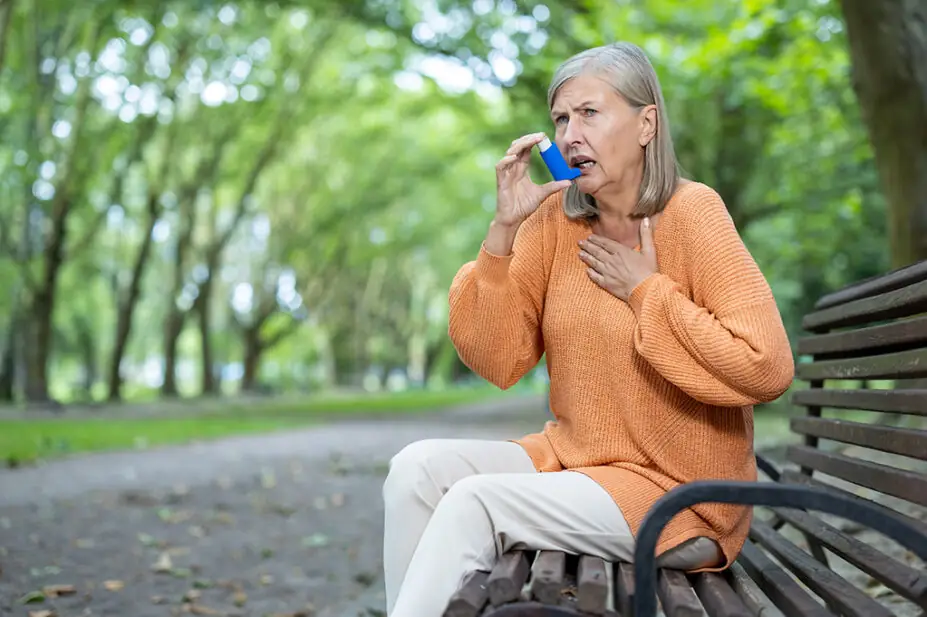
Shutterstock.com
Average carbon emissions from short-acting beta-2 agonist (SABA) inhalers prescribed in primary care have dropped by one-third since 2020, data analysed by The Pharmaceutical Journal have shown.
According to data obtained under the Freedom of Information Act from NHS England, the average emissions for SABA inhalers prescribed in primary care declined by 33% between 2020 and November 2024 — from 24.2 kgCO2e to 16.1 kgCO2e.
Pharmacy experts have told The Pharmaceutical Journal that the fall in carbon emissions is likely to be a result of incentives offered to primary care to switch patients from the Ventolin Evohaler (salbutamol sulfate; GSK) to the Salamol inhaler (salbutamol sulfate; Teva UK), which is associated with less than half the carbon emissions observed since 2020.
Under NHS England’s 2022/2023 investment and impact fund for primary care networks, points were awarded to practices that prescribed salbutamol metered-dose inhalers (MDIs) with a lower carbon intensity propellant.
Many areas undertook bulk switches of inhalers because it was a fairly straightforward change to make; however, other incentives to increase the prescribing of low-carbon dry-powder inhalers (DPIs) “where clinically appropriate” have had less impact, the pharmacy experts added.
The data also revealed that the proportion of non-SABA inhalers prescribed in primary care that are MDIs has remained steady, at 56.2% in 2020 compared with 55.7% in 2024, suggesting switches to DPIs have not been widely introduced.
Nuala Hampson, pharmacy lead at the Centre for Sustainable Healthcare, explained that moving from the Ventolin evohaler to Salamol — which produce emissions of around 28kg and 12kg CO2e per inhaler, respectively — was relatively simple.
“The next step, switching people over from MDIs to DPIs is much harder, requires some clinical decision-making, person-centred discussions and a face-to-face appointment to ensure good inhaler technique. So this change is likely to happen much more slowly,” she said.
Toby Capstick, consultant pharmacist in respiratory medicine at Leeds Teaching Hospitals NHS Trust agreed the reduction in emissions from SABA inhalers was likely a result of blanket switches to Salamol.
He added: “When you look at the Open Prescribing dashboards, the rate of decline (usually with an actual decline of 4–8%) followed by flattening out suggests a wholesale blanket switch across [integrated care boards].
“For non-SABA inhalers, there is little change because we quite rightly don’t see blanket switches from MDI to DPIs.
“I think this shows the difficulty we have in optimising respiratory medicine use – it’s time consuming and difficult to do.”
The data also show that there was a 13% reduction in total emissions of mixed nitrous oxide, or ‘gas and air’, from 183,757 tCO2e to 159,314 tCO2e between 2020 and 2024.
Over the same period, pure nitrous oxide emissions fell by 31%, from 81,563 tCO2e to 56,609 tCO2e.
As medicines amounts to 25% of carbon emissions within the NHS, under the NHS net-zero plan, there has been a “significant focus” on inhalers and anaesthetic gases, which account for a disproportionate amount at 3% and 2%, respectively.
Commenting on the data, a spokesperson for NHS England said: “Over the past five years, the NHS has made significant progress in reducing emissions from medicines, while improving patient care and saving money that can be redirected into front line care.
“NHS England continues to work with staff, trusts and suppliers in this area to deliver our world-leading commitment to become a net-zero healthcare system.”
Progress made on inhalers is expected to continue following the introduction of updated National Institute for Health and Care Excellence, British Thoracic Society and Scottish Intercollegiate Guidelines Network joint asthma clinical guidelines, published in November 2024, which support better outcomes for asthma patients and the environment.


